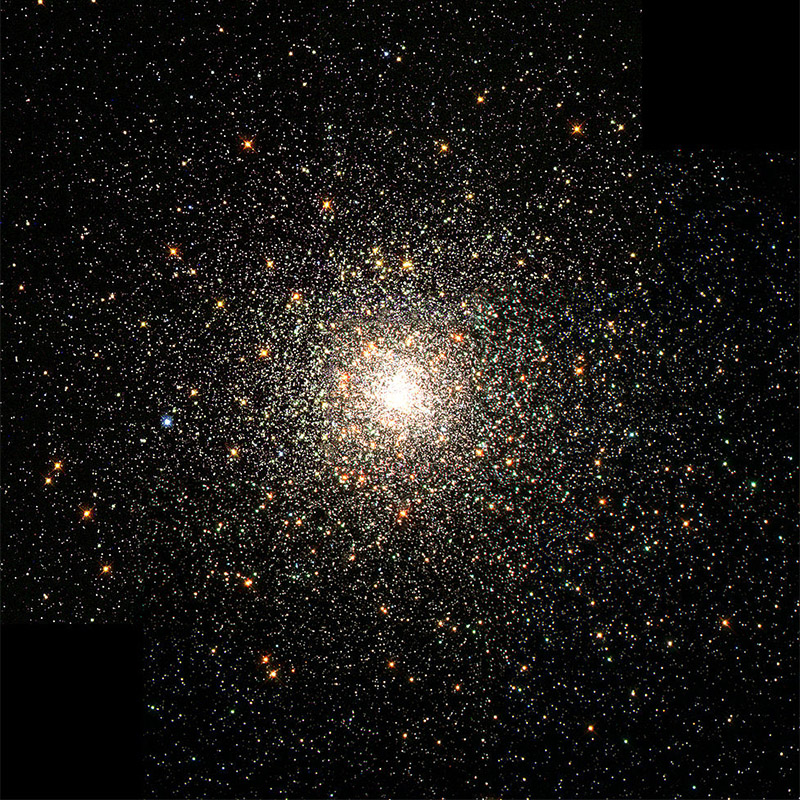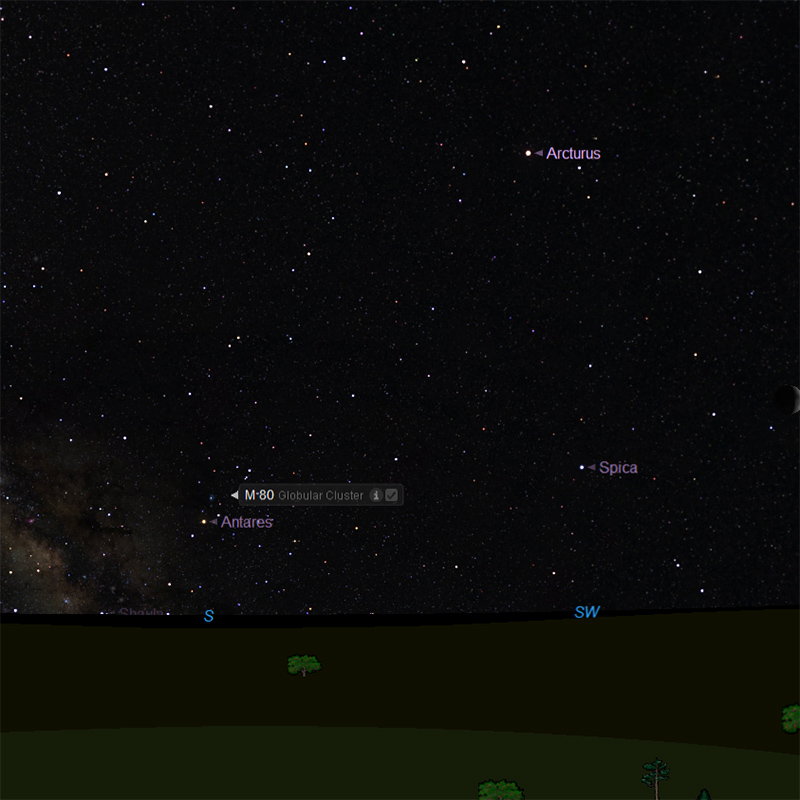M80

Credits: NASA, The Hubble Heritage Team, STScI, AURA
Messier 80 (M80) is a globular cluster located in the southern constellation Scorpius.
M80 has an apparent magnitude of 7.87 and lies at a distance of 32,600 light years from Earth. It has the designation NGC 6093 in the New General Catalogue.
Messier 80 has an apparent diameter of 10 arc minutes, corresponding to a spatial extension of 96 light years.
It can be seen in small and medium-sized telescopes, which show a fuzzy ball of light. 8-inch telescopes show the cluster’s bright nucleus and extended halo,
and larger instruments are required to resolve individual stars in the cluster. 12-inch telescopes will reveal the brightest members.
M80 is one of the most densely populated globular clusters in our galaxy. It has an estimated age of 12.54 billion years.
Messier 80 contains at least 200,000 stars, including a considerable number of blue stragglers.
These are old stars that appear younger, bluer and more massive than other members of the cluster as a result of collisions and close interactions with neighbouring stars,
which left them stripped of their cooler outer envelopes.
In 1999, observations with the Hubble Space Telescope revealed that M80 contained about twice as many blue stragglers in its central region than any other
globular previously investigated with the Hubble.
Facts about M80 by Keith Turnecliff
A nova was detected in M80 by the German astronomer Arthur von Auwers on May 21, 1860. It was the first nova ever seen in a globular cluster.
It had a luminosity of more than 200,000 times that of the Sun. At its peak, the nova outshone the entire cluster and changed its appearance for several days.
On June 16, it faded to magnitude 10.5.
The best time of year to observe M80 is during the summer, when Scorpius is prominent in the evening sky.

Best viewed with resolution 1920 x 1080.
Credits: Image courtesy of Starry Night Pro Plus 8, researched and implemented by Keith Turnecliff.